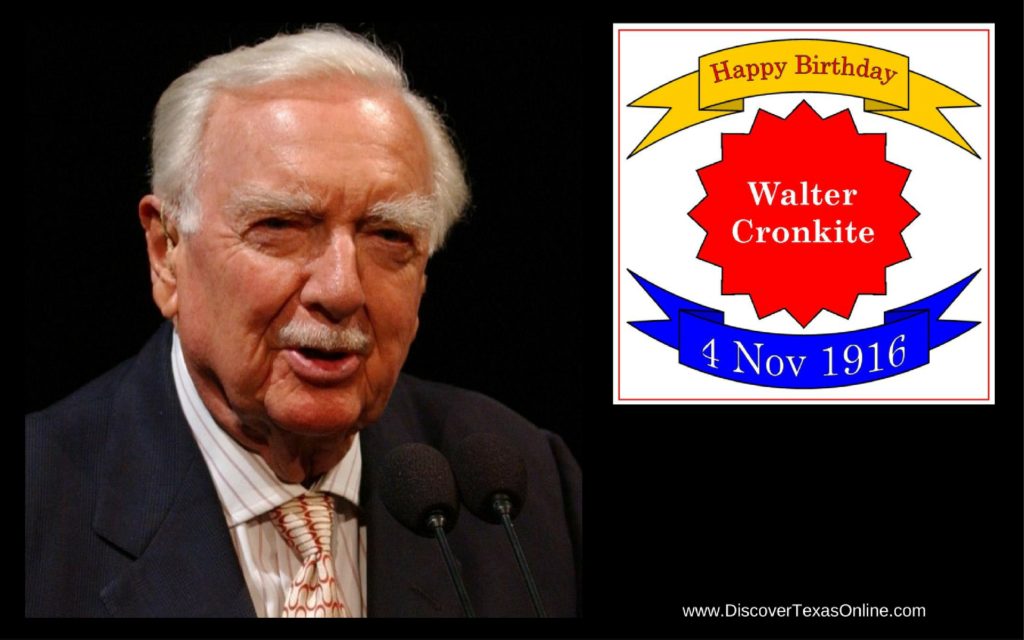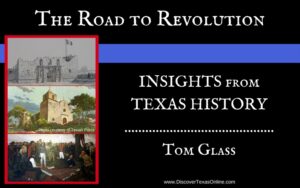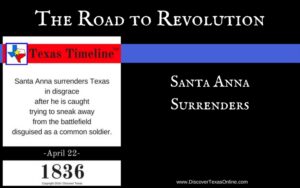
Walter Leland Cronkite, Jr. was born in Saint Joseph, Missouri on November 4, 1916, but his father, who was a dentist, moved the family to Houston, Texas when Walter was 10. He attended San Jacinto High School, where he served as editor for the high school newspaper–perhaps setting the stage for his future occupation as an American broadcast journalist.
After graduation, Kronkite attended the University of Texas, where he worked on the Daily Texan and was active in drama. He didn’t finish his degree, though, and it might be argued that if the purpose of a college degree is to qualify a person for a future career, in Kronkite’s case the degree was somewhat unnecessary. He dropped out during his junior year (the fall semester of 1935) to take a job reporting news and sports for a newspaper and went on to become a radio broadcast announcer for Station WKY out of Oklahoma City. By 1937 he had joined the United Press in Kansas City and seemed to be in “the right place at the right time” to become one of the top American reporters of World War II, accompanying American troops on bombing raids, landing in a glider with the 101st Airborne, and covering the Battle of the Bulge as an international correspondent. In this position he attracted the attention of CBS News, who offered to more than double his pay if he would join their team of war correspondents. He told his boss of the tempting offer. United Press could not match the salary, but they did offer a small raise. Walter stayed.
In 1950, CBS News approached him again. Television was the latest technology, and Cronkite accepted a broadcasting job for CBS in the nation’s capital. In that role he covered both the Democratic and Republican National Conventions leading up to the 1952 presidential election. His reports were so balanced that many used the term “news anchor” to describe his role. By 1962, he was the lead anchorman for the CBS Evening News. He was the first anchorman of a regular half-hour nightly news program and held that position as “the most trusted man in America” until he retired in 1981. During one of the most pivotal eras of American history, Walter Cronkite covered everything from World War II to Watergate, assassinations to hostage crises, Olympics to moon landings, always closing his reports with, “…and that’s the way it is…” He was, literally, the face of American news.
Here are clips of his Top Ten news reports:
He also hosted several educational series. You Are There (1953-1957 and 1971) re-enacted moments in history as if he were reporting on them live. The Twentieth Century (1957-1967) documented important historical events using first-person newsreel footage and interviews. The 21st Century (1967-1970) attempted to provide a glimpse into the future. It’s News to Me (hosted by Cronkite) was a game show based on news events, and Pick the Winner (1952, 1956) presented a series of issues-based election-season discussions.
Click on any of these links to see “…the way it was…”
https://youtu.be/JPvdlA_rtxk?list=PLDNdPp2ocy2rN3dLmI0hYJZ09Xn20MHVB
https://youtu.be/BQK0cFAj6C8?list=PLDNdPp2ocy2rN3dLmI0hYJZ09Xn20MHVB
(After you watch this one, compare this Texas Technology of 1968!)



